A Day at the Museum.
First published in Sanctuary Cub,
Vol. 43
No. 9,
September 2023
Text and images by Sutirtha Lahiri
Train to Tring
It was a usual day at the museum that took an interesting (and nostalgic) turn. Like the past two weeks, I took the train to the Natural History Museum (NHM) at Tring, signed in, climbed to the 2nd floor, and pulled out a drawer full of bird ‘specimens’ – dead birds stuffed and preserved for scientific study. As I was going through a cabinet of Slender-billed Babblers – a grassland bird restricted to the lowland grasslands of India and nepal – I was in for a surprise; there was a specimen with the label ‘Coochbehar’. I had mixed feelings; happy that a rare and restricted bird was collected from my hometown (in northern West Bengal), yet sad that it hasn’t been seen in my state for the past 73 years.
The NHM, which houses the world’s largest collection of preserved birds, with 750,000 specimens from 95 per cent of the world’s bird species is located in Tring, a town one hour north of London, u.K. As an ecologist studying grassland birds in India as part of my Ph.D. work, I wanted to tap into this vast resource to understand where grassland birds have been collected in the past. These specimens are made through a process of taxidermy – where any wet tissue is removed from the body, the outer feathers are washed and dried, and the bird is then stuffed with cotton and stitched. Care is taken to ensure there is no insect infestation. They are then stored in humidity and climate-controlled rooms, in large drawers, and grouped and arranged in a very meticulous manner based on species classification.
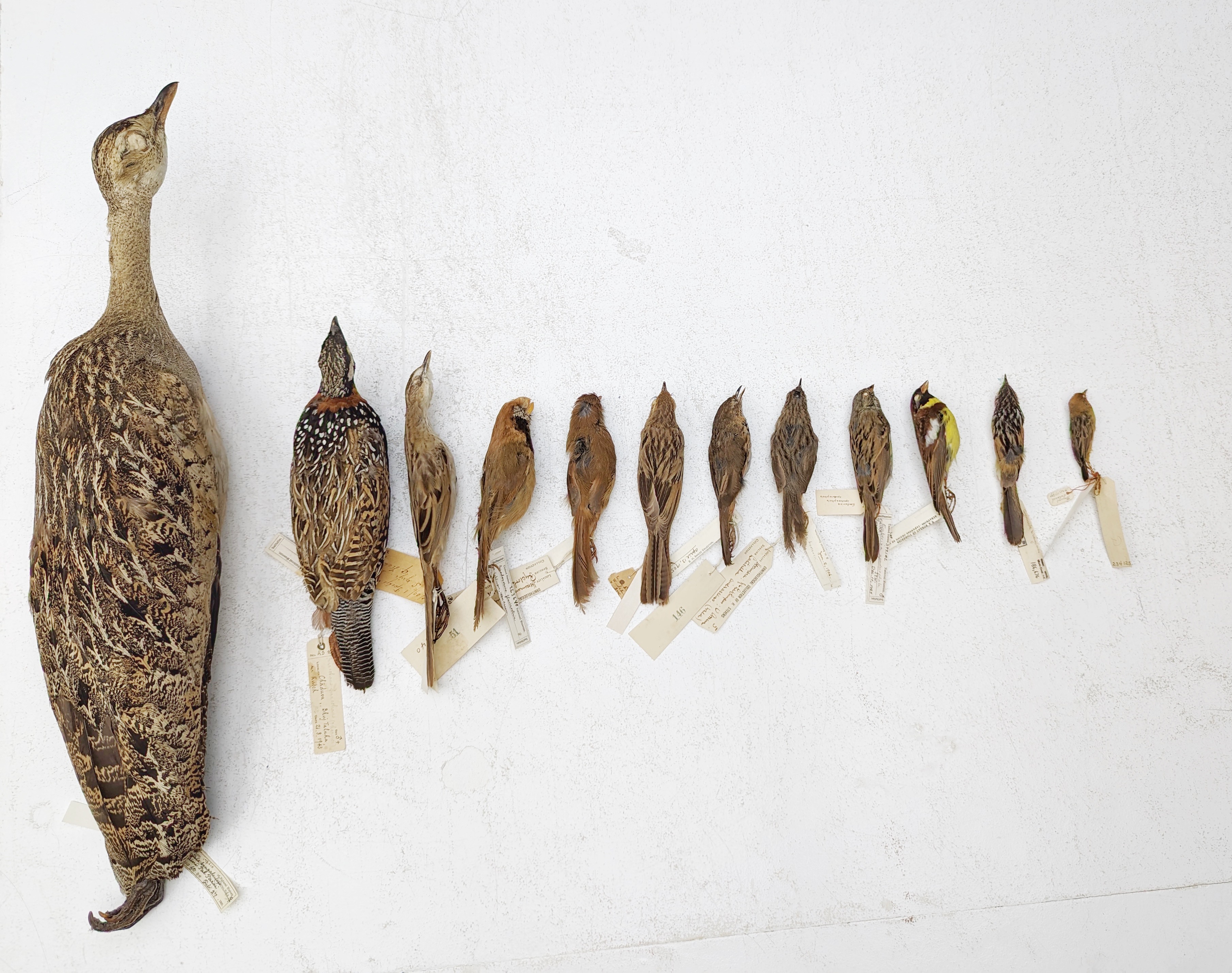
Different species of rare and endemic grassland birds, preserved as specimens at the museum.
Science Through History
Historical information on birds that are endangered can help understand how bird distributions have changed over the past decades. Scientists throughout the world are tapping into museum collections to get a hint at the past, to try to understand species distribution – where species were once found – including for species that are now extinct. To do this, researchers rely on the paper tag that is attached to every specimen. This tag contains a wealth of information – who collected the bird, where and when it was collected, measurements, and any other information that the collector could squeeze in. In my two weeks as a visiting researcher, I had the good fortune of working with many such specimens, including of birds that are now considered extinct, such as the Pink-headed Duck (last recorded in Bihar in 1935), the Himalayan Quail, and the Manipur Bush Quail. All these historical specimens had a story – a story of diversity, and how rampant global anthropogenic changes are making more and more species go extinct.
Museums offer a chance to study so much more. Scientists are tapping into preserved bird nests to study their elaborate structures, studying egg colour diversity and how they vary in different areas, analysing various aspects of a bird specimen – from CT-scanning bills, to measuring plumage colouration and pigments – the possibilities are endless.
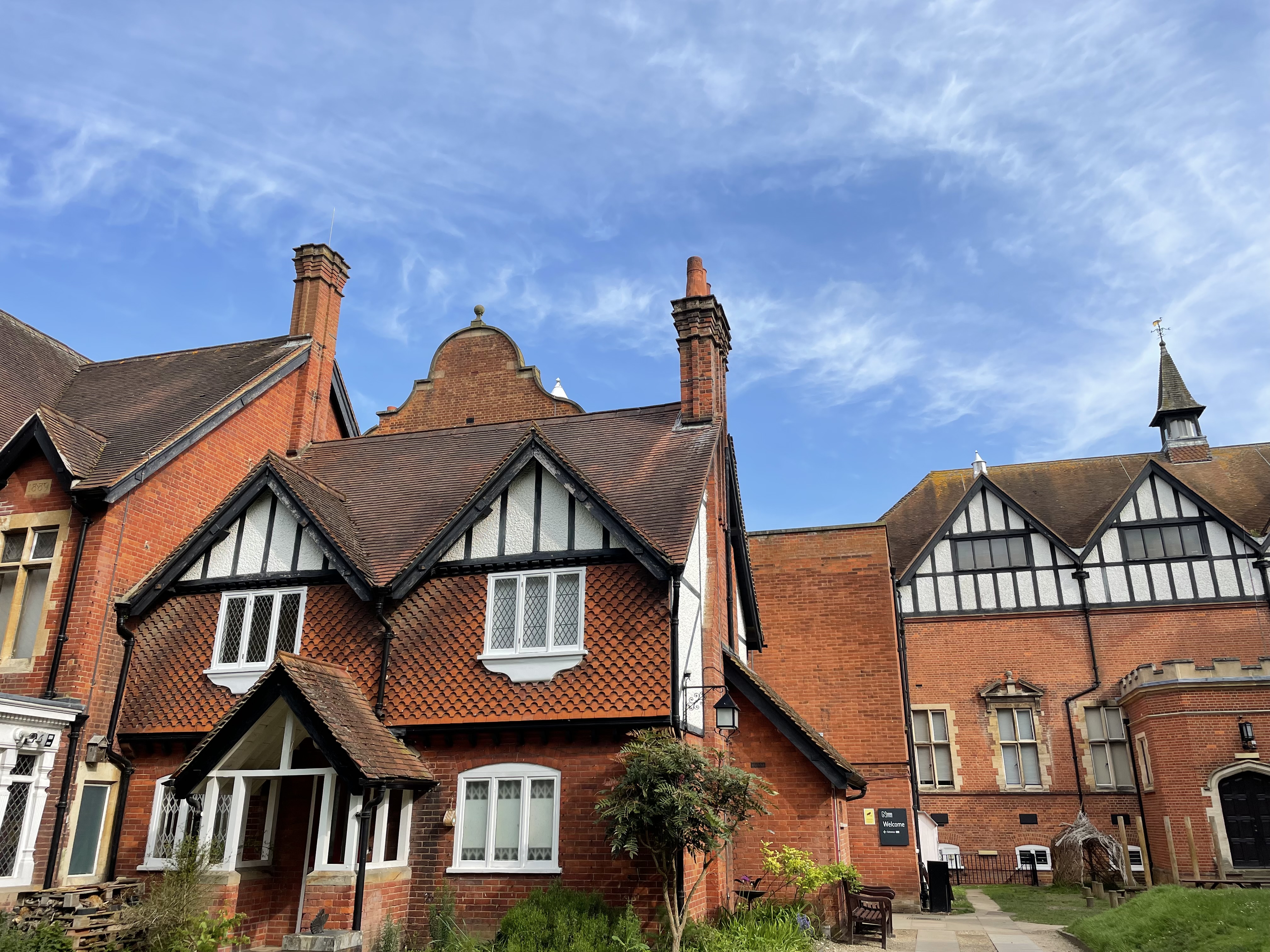
Natural History Museum at Tring, London, U.K.
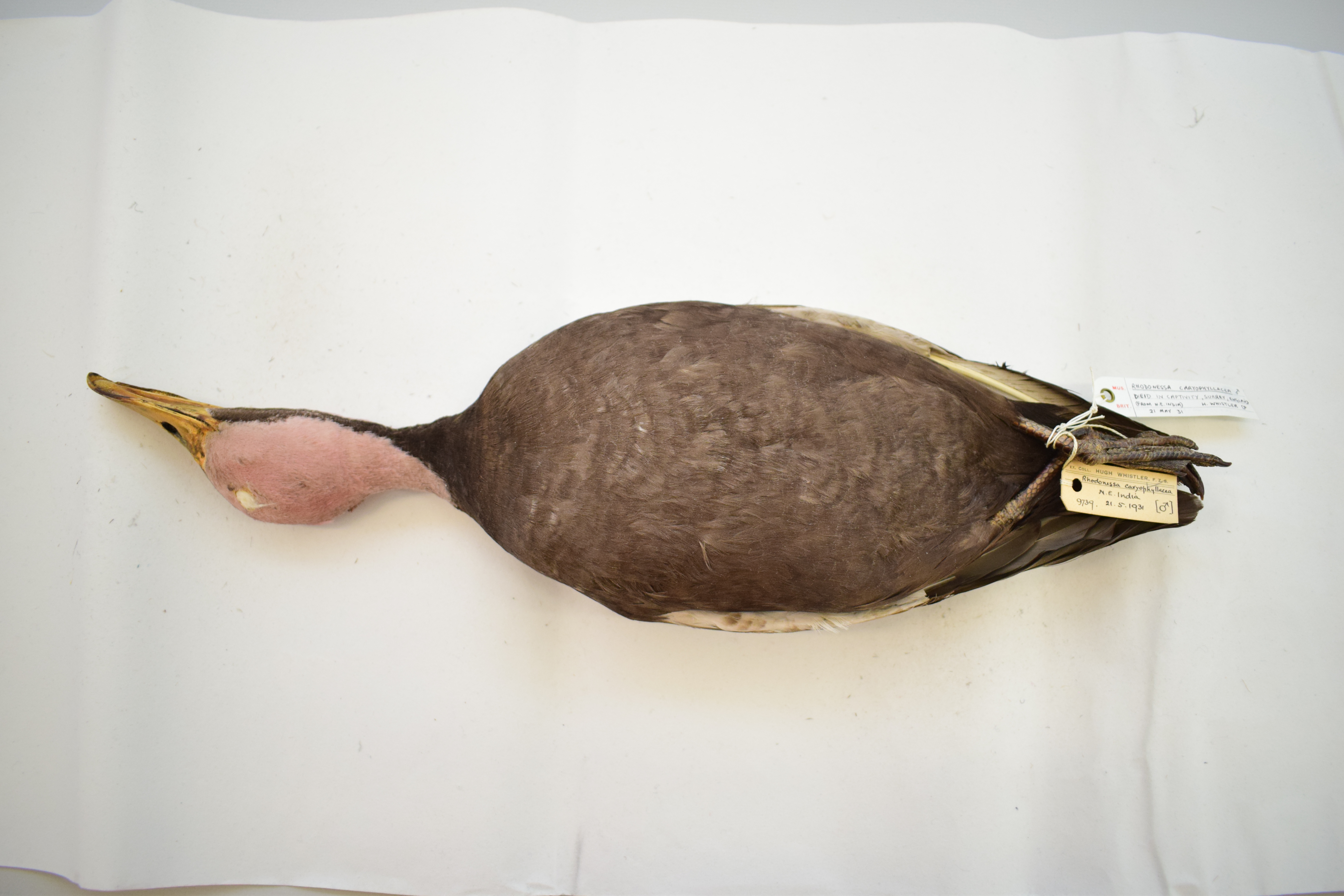
The Pink-headed Duck is believed to be extinct since the 1950s.
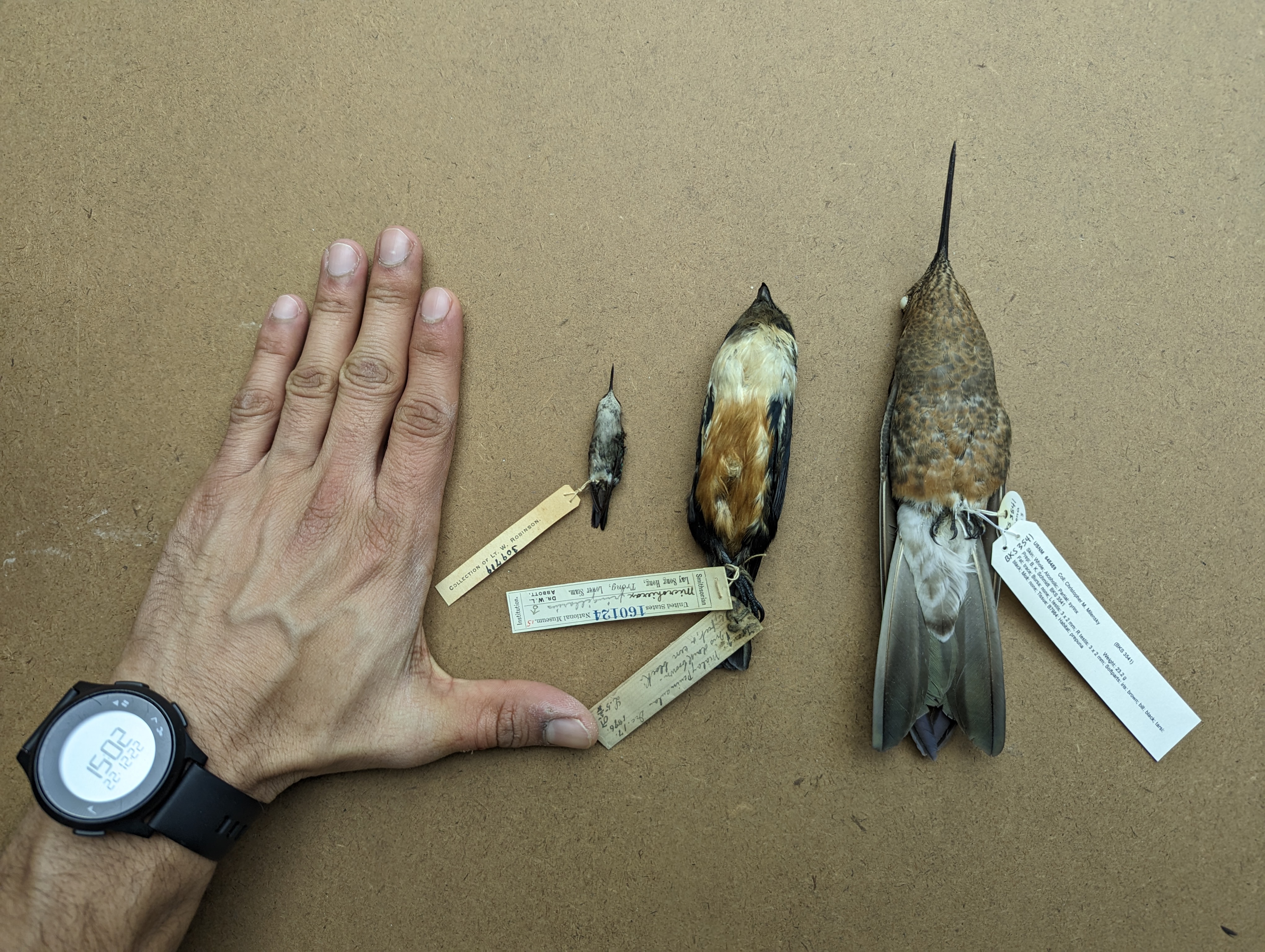
Museum specimens help us study diversity in bird body sizes, like the smallest and largest hummingbirds in the world, pictured here: the Bee Hummingbird (left) and the Giant Hummingbird (right). Centre: Black-thighed Falconet.
Museums to the Rescue
In recent times, museums have vastly increased our understanding of how global climate and land-use change is affecting birds. Analysing specimens collected over 40 years, researchers have found out that, with increase in global temperatures, North American birds are decreasing in size! They help us understand how habitat fragmentation might affect connectivity in different populations of birds. Imagine being able to extract DNA from a bird collected more than 200 years ago – now possibly even extinct – to answer these longstanding questions.
Working at a natural history museum is equal parts fun and nostalgic. holding a bird in your hand – one that is extinct in the wild – might induce a lot of dismay at the failure of powerful entities to protect our biodiversity. At the same time, it also invokes curiosity to do more, to understand these species to do something about it. As they say, a bird in hand is certainly worth two in the bush!
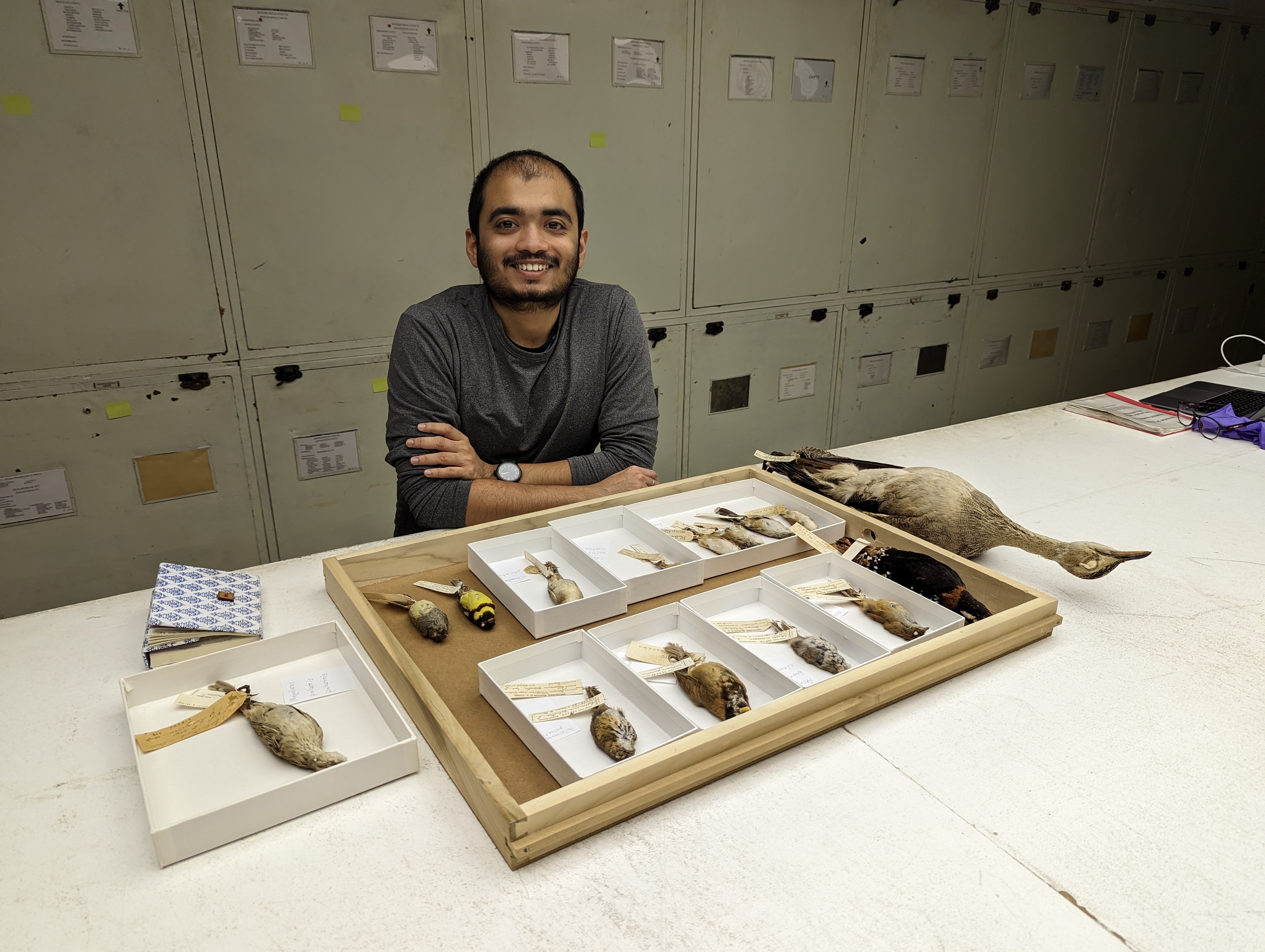
The author studied grassland bird specimens at the museum for his Ph.D. research.
Sutirtha Lahiri is a Ph.D. student at the University of Minnesota, USA. He studies grasslands, integrating his love for birds, conservation and policy. He is also a freelance writer, focusing on natural history and conservation.




